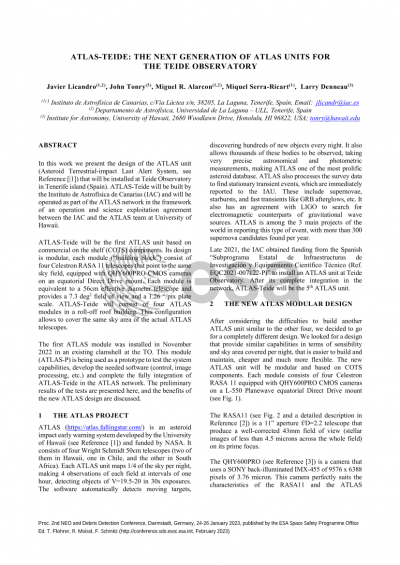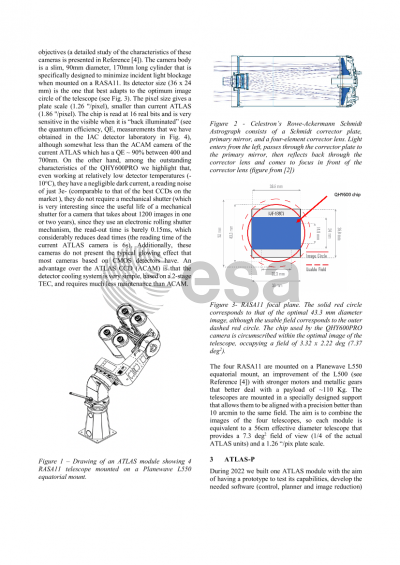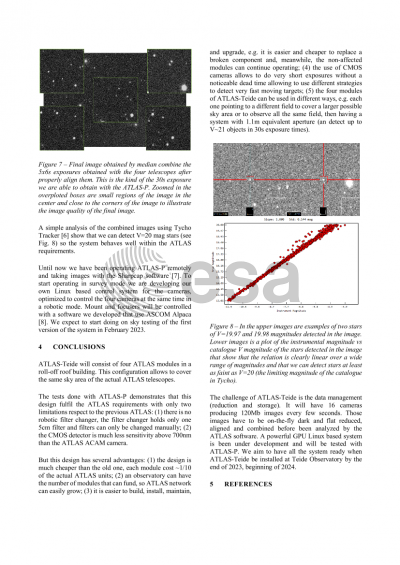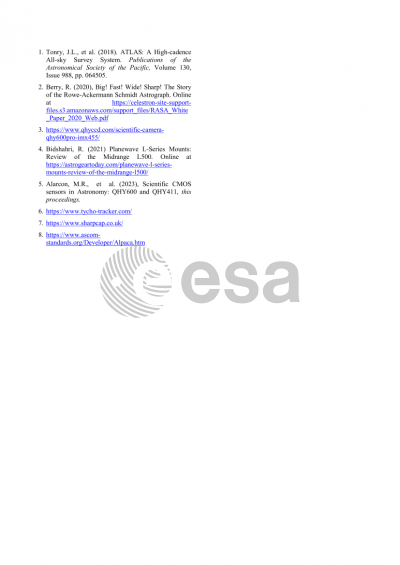Document details

Abstract
In this work we present the design of the ATLAS (Asteroid Terrestrial-impact Last Alert System) unit that will be installed at Teide Observatory in Tenerife island (Spain). ATLAS-Teide will be built by the IAC and will operated as part of the ATLAS network in the framework of an operation and science exploitation agreement between the IAC and the ATLAS team at University of Hawaii.
ATLAS-Teide will be the first ATLAS unit based on COTS. Its design is modular, each module (“building block”) consist of four Celestron RASA 11 telescopes that point to the same sky field, equipped with QHY600 CMOS cameras on a equatorial Direct Drive mount. Each module is equivalent to a 56cm effective diameter telescope and provides a 7.3 deg2 field of view and a 1.25 “/pix plate scale. ATLAS-Teide will consist of four ATLAS modules in a roll-off roof building. This configuration allows to cover the same sky area of the actual ATLAS telescopes. This design is cheaper to build and maintain, and more flexible than the actual one.
The first ATLAS “building block” will be operational before the end of 2022 and we aim to complete the four modules of ATLAS-Teide by the end of 2023.
Preview






